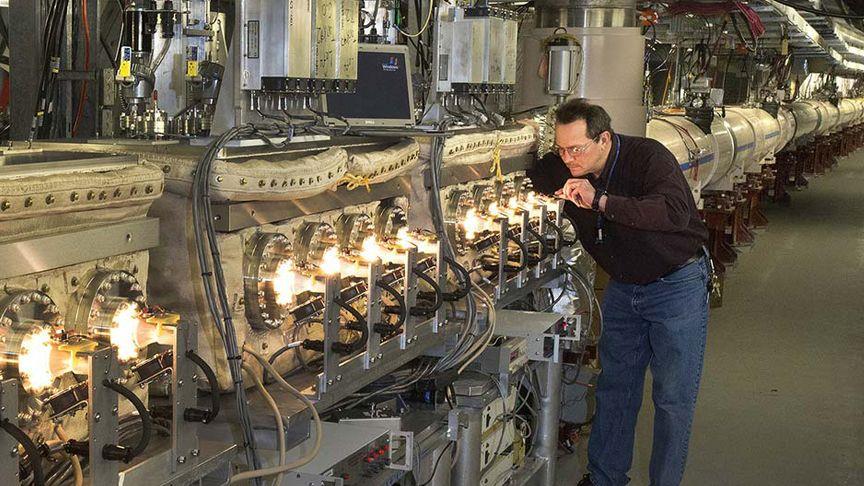Shortly after the Atomic Age began with the detonation of the first nuclear bomb, the government established research facilities to delve into the innate powers of nature. A major center was situated at the former Camp Upton, Brookhaven National Laboratory, and it quickly became renowned for helping make our modern world what it is today.
The lab’s scientists routinely make groundbreaking discoveries in physics, chemistry, and biology using exotic equipment such as a Graphite Research Reactor, High Flux Beam Reactor, and a special Medical Research Reactor. The facility is also home to a Relativistic Heavy Ion Collider and the National Synchrotron Light Source II, highly advanced machines that allow researchers from all over the world to probe the deepest secrets of the atom.
 |
| Brookhaven National Lab |
The 5,265-acre campus, overseen by the U.S. Department of Energy, is staffed by approximately 2,800 scientists, engineers, technicians, and support personnel and hosts about 5,300 guest investigators every year. It’s guarded by a Department of Energy Protective Force and has a full-service fire department, water company, and its own ZIP code. There is also a National Weather Service forecast office on the site with a NEXRAD weather radar facility.
 |
| Brookhaven National Lab |
Brookhaven is one of only 10 national laboratories nationwide and is managed by Brookhaven Science Associates, a partnership between Stony Brook University and Battelle, and six core universities: Columbia, Cornell, Harvard, Massachusetts Institute of Technology, Princeton, and Yale. It has an annual budget of over $700 million and is the only multidisciplinary national laboratory in the northeastern United States.
“Brookhaven lab is one of the larger employers in Suffolk County, and they are behind many discoveries and products that are developed right here on Long Island,” said county Executive Edward Romaine, who noted that the region also benefits through the lab’s collaboration with Stony Brook University, Cold Spring Harbor Laboratory, and various medical institutions. “They've been doing advanced science research for years, and it is really paying off.”
The lab’s massive Relativistic Heavy Ion Collider is the first and one of only two operating heavy-ion colliders ever built. An international team uses it to collide ions traveling near the speed of light to study the primordial form of matter that existed in the universe shortly after the “Big Bang,” when the universe was created.
The lab is also home to the world's most advanced synchrotron light source, a complex system designed to produce x-rays 10,000 times brighter than the lab's previous light source. It supports basic and applied research in energy security, advanced materials synthesis and manufacturing, environment, and human health.
Brookhaven is also the future site of the $2.6 billion Electron-Ion Collider, a unique high-energy, high-luminosity collider that will be one of the most challenging and exciting accelerator complexes ever built. “The EIC will be a discovery machine, providing answers to long-elusive mysteries of matter related to our understanding the origin of mass, structure, and binding of atomic nuclei that make up the entire visible universe,” according to Lab Director Dr. JoAnne Hewett. A professor in Stony Brook University’s Department of Physics and Astronomy and its C.N. Yang Institute for Theoretical Physics, Hewett was associate lab director at the National Accelerator Laboratory in California.
The lab’s world-renowned research facilities are open to the private sector, academia, and other agencies for research and development work. Their staff provides expertise and helps solve a wide range of challenges in fields such as energy, environment, data science, medicine, and nuclear science technology.
